Stacy A. Padula's Blog
October 1, 2025
Genesis Confirmed? The Compelling Case for a Global Flood
The narrative of a worldwide flood, as described in the Book of Genesis, has been a cornerstone of Judeo-Christian tradition for millennia. This story, in which a catastrophic deluge covers the Earth, is not unique to the Bible; similar accounts appear in ancient texts across cultures, from the Epic of Gilgamesh in Mesopotamia to flood myths among indigenous peoples in the Americas, Australia, and Asia. While skeptics often dismiss the Genesis flood as mere mythology, a growing body of scientific, geological, and anthropological evidence lends credence to the idea that a massive, global-scale flood event may have occurred in Earth’s distant past. This article explores the compelling evidence supporting the concept of a worldwide flood, drawing from geological records, historical accounts, and cultural narratives.
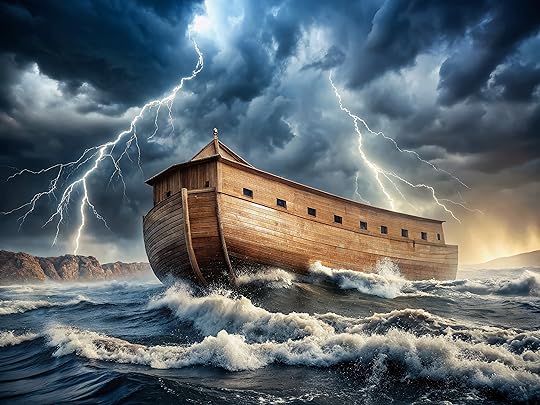
Geological Evidence for a Global Flood
One of the most persuasive lines of evidence for a global flood comes from the field of geology. The Earth’s crust is marked by widespread sedimentary rock layers, which are typically formed by the deposition of material in water. These layers, found on every continent, often contain marine fossils, suggesting that vast areas of land were once submerged. For example, the Grand Canyon in the United States reveals thick layers of sedimentary rock, such as limestone, shale, and sandstone, stacked atop one another, with marine fossils like trilobites and brachiopods embedded within them. These findings indicate that large portions of what is now dry land were once underwater, consistent with a massive flood event.
Massive fossil graveyards, where thousands of organisms are found buried together, provide further support. Sites like the Morrison Formation in North America, which contains vast numbers of dinosaur bones, or the Messel Pit in Germany, with its densely packed fossil deposits, suggest rapid burial under catastrophic conditions. Such conditions align with the sudden, overwhelming flood described in Genesis, where waters rose rapidly, entombing creatures in sediment.
Another striking geological feature is the presence of widespread, flat-lying sedimentary layers that span continents. For instance, the Sauk Sequence, a series of sedimentary deposits, covers much of North America and is found in similar forms globally. These layers suggest a massive, uniform depositional event, as would be expected in a global deluge. Erosion patterns, such as the flat-topped mesas and plateaus seen worldwide, also point to rapid, large-scale water flow rather than gradual processes over millions of years.
Submarine Canyons and Oceanic Evidence
The ocean floors provide additional clues. Submarine canyons, like the Monterey Canyon off California’s coast, are massive underwater channels that rival terrestrial canyons in size. These features are best explained by rapid, high-energy water flows, possibly triggered by catastrophic flooding or massive sediment displacement during a global event. The discovery of vast underwater sediment fans, such as the Bengal Fan in the Indian Ocean, further supports the idea of enormous water-driven sediment transport, consistent with a global flood.
Marine sediment on mountaintops is another compelling piece of evidence. Fossils of sea creatures, such as ammonites and corals, have been found atop the Himalayas, Alps, and Andes, thousands of feet above sea level. While mainstream geology attributes this to tectonic uplift over millions of years, the presence of well-preserved marine fossils in such locations could also indicate that floodwaters once covered these peaks, depositing marine life before receding.
Cultural and Historical Corroboration
Beyond geology, the universality of flood narratives across human cultures is striking. Over 200 distinct flood myths exist worldwide, from the Sumerian account of Ziusudra to the Native American Pima tribe’s story of a great deluge. These stories often share common elements: a divine warning, a chosen survivor, and the destruction of a corrupt world by water. The consistency of these accounts, spanning geographically and culturally disparate civilizations, suggests a shared memory of a real, catastrophic event.
The Epic of Gilgamesh, one of the oldest known texts, describes a flood remarkably similar to the Genesis account, with a man named Utnapishtim building a boat to survive a divinely sent deluge. Likewise, the ancient Chinese Shu Jing chronicle references a great flood that covered the land, managed by a hero named Yu. The prevalence of such stories, even in isolated cultures, supports the idea that a global flood left an indelible mark on human consciousness.
Rapid Geological Processes and Catastrophism
Modern geology often assumes uniformitarianism—the idea that Earth’s features formed slowly over millions of years. However, evidence of rapid, catastrophic processes challenges this view. For instance, experiments have shown that sedimentary layers can form quickly under high-energy water conditions, as seen in the 1980 eruption of Mount St. Helens, where stratified deposits formed in hours. This suggests that the vast sedimentary layers covering continents could have been laid down rapidly during a global flood, rather than over eons.
Polystrate fossils—trees and other organisms buried upright through multiple sedimentary layers—further support rapid deposition. These fossils, found in places like Joggins, Nova Scotia, indicate that layers were deposited in quick succession, not over millions of years, as the organisms would have decayed otherwise. Such evidence aligns with the Genesis account of a sudden, overwhelming flood.
Hydrological Feasibility
Critics often argue that a global flood is hydrologically impossible, citing the volume of water required to cover the Earth. However, the Genesis account describes a world with different topography, where “the fountains of the great deep” broke open, and rain fell for 40 days (Genesis 7:11-12). Geological evidence of massive volcanic and tectonic activity, such as the Deccan Traps in India or the Siberian Traps, suggests that catastrophic geological events could have released vast amounts of subterranean water and altered Earth’s surface dramatically. Combined with heavy rainfall and possible comet or asteroid impacts, which could have triggered tsunamis and atmospheric changes, a global flood becomes more plausible.
Addressing Counterarguments
Skeptics often point to the lack of a single, universal flood layer in the geological record. However, a global flood would not necessarily produce a uniform layer, as water currents, sediment loads, and local conditions would create varied deposits. Additionally, the dating of geological strata relies on assumptions about radiometric decay rates, which may not account for accelerated decay during catastrophic events. For example, studies on zircon crystals in volcanic rocks have shown evidence of rapid radioactive decay, challenging conventional timelines.
Another common objection is the survival of animals on Noah’s Ark. While the logistics of housing representatives of every “kind” (a broader category than modern species) are complex, the Ark’s described dimensions (approximately 450 feet long, 75 feet wide, and 45 feet high) suggest a vessel capable of carrying thousands of animals, particularly if juveniles or smaller representatives were chosen. The universality of flood myths also implies that survivors, human and animal, repopulated the Earth, supporting the feasibility of the narrative.
Conclusion: A Compelling Case
The evidence for a global flood, as described in Genesis, is multifaceted and compelling. Geological records reveal widespread sedimentary layers, marine fossils on mountaintops, and signs of rapid, catastrophic processes. Cultural narratives across the globe preserve memories of a great deluge, suggesting a shared historical event. While mainstream science often interprets these phenomena through a uniformitarian lens, the data can also be viewed through the lens of catastrophism, aligning with the biblical account.
The Genesis flood is not merely a story of faith; it is a narrative supported by tangible evidence from the Earth’s crust, human history, and the collective memory of civilizations. As research continues to uncover new findings, the case for a worldwide flood grows stronger, inviting both believers and skeptics to reconsider the power and scope of this ancient event. Whether viewed as divine judgment or a natural catastrophe, the flood remains one of the most profound events in Earth’s history, etched into both stone and story.
September 26, 2025
A Christian Response to Evolutionary Theory
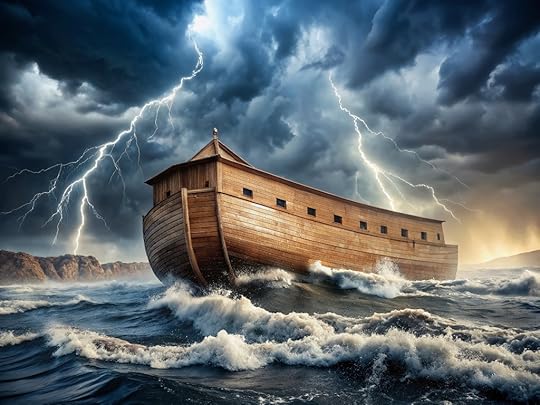
Carbon dating, a method used to estimate the age of organic remains by measuring the decay of carbon-14, is often cited as evidence for an ancient Earth. However, the global flood described in Genesis 6–9, which covered the entire Earth and reshaped its surface, introduces significant challenges to the reliability of carbon dating, especially for fossils.
Contamination by Ancient Carbon: The flood would have caused massive geological upheaval, eroding and redistributing ancient sediments containing “dead” carbon (carbon-12, lacking carbon-14). When floodwaters mixed this old carbon with organic material from plants, animals, or humans, it could dilute the carbon-14 content in those remains. This contamination would make samples appear much older than they are, as carbon dating assumes a consistent carbon-14 to carbon-12 ratio in the organism at the time of death. For example, marine organisms or terrestrial remains exposed to floodwaters rich in dissolved ancient carbon (from limestone or volcanic sources) could yield dates far older than their true age.Reservoir Effects and Environmental Disruption: The flood would have drastically altered local and global environments, submerging terrestrial ecosystems under water for an extended period. This could create reservoir effects, where organisms absorb carbon from environments with lower carbon-14 levels (e.g., deep ocean water or flood-deposited sediments). Such effects are already known to skew carbon dates in marine and freshwater contexts, and a global flood would amplify this issue, rendering fossil dates unreliable. For instance, fossils buried rapidly during the flood could reflect the carbon-14 levels of the floodwater rather than the atmosphere, leading to erroneously old dates.Atmospheric Changes: A global flood might have been accompanied by catastrophic events, such as volcanic activity or changes in cosmic ray influx (due to a possible collapse of a pre-flood water canopy, as some creationists propose). These events could have altered the production rate of carbon-14 in the atmosphere, disrupting the assumption of a stable carbon-14 baseline. If pre-flood atmospheric conditions differed significantly, post-flood samples would not align with modern calibration curves, which assume long-term stability.Rapid Fossil Formation: The flood’s catastrophic conditions—massive sediment deposition, rapid burial, and high-pressure environments—could explain the formation of the fossil record in a short timeframe. Fossils, often assumed to require millions of years to form, could have been preserved rapidly during the flood, with soft tissues and organic material intact in some cases (as seen in discoveries of dinosaur soft tissue). This challenges the evolutionary timeline and suggests that fossils are much younger than claimed, further undermining carbon dating’s applicability to them, as carbon-14 is only reliable for samples up to ~50,000 years old anyway.Mainstream science assumes uniformitarian conditions (slow, gradual processes over millions of years), but the biblical flood suggests a catastrophic, one-time event that invalidates these assumptions. As a result, carbon dates for fossils, especially those from the flood period, cannot be trusted to reflect true ages, aligning instead with a biblical timeline of a few thousand years.
Refuting Evolution: A Biblical Alternative
Evolution relies on several key assumptions that conflict with a biblical worldview:
Lack of Transitional Fossils: Evolution predicts a gradual progression of life forms, with numerous transitional fossils showing intermediate stages between species. However, the fossil record is marked by sudden appearances of fully formed species and gaps where transitions should exist. Creationists argue that this supports the idea of distinct created kinds, as described in Genesis, rather than a gradual evolutionary process. The flood’s rapid burial could explain the abundance of fossils without requiring millions of years.Complexity of Life: The intricate complexity of biological systems, such as the human eye, DNA, or cellular machinery, challenges the idea that random mutations and natural selection could produce such systems. The concept of irreducible complexity suggests that certain structures require all parts to function, making gradual evolution implausible. A divine intelligent design, as described in Genesis, offers a simpler explanation: life was created fully formed by God.Genetic Entropy: Rather than organisms evolving upward in complexity, genetic studies suggest that mutations accumulate over time, degrading genomes. This aligns with a young-earth view where humanity, starting from a perfect creation in Adam, has experienced genetic decline over a few thousand years, not improvement through evolution.Historical Reliability of Genesis: The Bible presents a historical account of creation, with Adam as the first man, created directly by God (Genesis 1:26–27). The genealogies in Genesis 5 and 11 provide a chronology suggesting that humanity is only 6,000–10,000 years old. These records, preserved through divine inspiration, offer a direct historical timeline that contradicts the millions of years required for evolution.How Humanity Could Be Only 6,000–10,000 Years Old
Several lines of evidence and reasoning support the idea that humans, descended from Adam, are as young as the Bible suggests:
Biblical Genealogies: The genealogies in Genesis 5 (Adam to Noah) and Genesis 11 (Noah to Abraham) provide a detailed lineage with specific ages, totaling roughly 6,000–10,000 years when calculated. While some scholars debate whether these genealogies include gaps, a straightforward reading supports a young human race. For example, Adam lived 930 years, and his descendants’ ages are recorded down to Noah, allowing for a clear timeline.Population Growth Models: The current global population (approximately 8 billion as of 2022) is consistent with a young-earth model. Starting from two people (Adam and Eve) around 6,000 years ago, and factoring in reasonable population growth rates (e.g., doubling every 150 years), the human population could reach billions within this timeframe. In contrast, if humans existed for hundreds of thousands of years, as evolution claims, the population would be far larger or require implausible bottlenecks.Cultural and Historical Records: Ancient civilizations, such as those in Mesopotamia, Egypt, and China, have written records dating back only about 4,000–5,000 years. This aligns with the post-flood dispersal of humanity from the Tower of Babel (Genesis 11). If humans existed for tens of thousands of years, we would expect older written records or more advanced prehistoric cultures, which are absent.Soft Tissue in Fossils: Discoveries of soft tissue, blood vessels, and proteins in dinosaur fossils (e.g., a 2005 study of a Tyrannosaurus rex femur) challenge the idea that these fossils are millions of years old. Such biomaterials degrade rapidly under normal conditions, suggesting that dinosaurs—and by extension, the fossil record—are much younger, consistent with a post-flood world a few thousand years ago.Rapid Geological Processes: Features like polystrate fossils (trees spanning multiple sedimentary layers) and rapidly formed geological formations (e.g., Mount St. Helens’ rapid canyon formation in the 1980s) demonstrate that catastrophic processes can create features typically attributed to millions of years. The flood could have produced the geological record in a short time, supporting a young earth and young humanity.Mitochondrial DNA and Genetic Clocks: Studies of mitochondrial DNA, passed down through maternal lines, suggest a recent origin for humanity. Some creationist analyses argue that mutation rates in mitochondrial DNA point to a single female ancestor (a “mitochondrial Eve”) within the last 6,000–10,000 years, aligning with the biblical account of Eve.Critics of the young-earth view argue that carbon dating, other radiometric methods (e.g., uranium-lead dating), and the fossil record provide overwhelming evidence for an ancient Earth. However, these methods rely on assumptions about initial conditions, decay rates, and environmental stability, which the biblical flood disrupts. For example, uranium-lead dating assumes no loss or gain of isotopes, but flood-related geological upheaval could reset or contaminate these systems. Additionally, the evolutionary interpretation of the fossil record assumes gradualism, which is inconsistent with the sudden appearance of complex life forms.Mainstream science also points to genetic diversity as evidence of a long human history. However, creationists argue that God created Adam and Eve with significant genetic diversity, allowing for rapid adaptation within created kinds without requiring millions of years of evolution.
The biblical account of a recent creation and a global flood provides a robust framework for understanding human origins and the fossil record. The flood undermines the reliability of carbon dating for fossils by introducing contamination, reservoir effects, and atmospheric changes, aligning the evidence with a young earth. Evolution’s reliance on long timescales, transitional fossils, and gradual processes is challenged by the complexity of life, genetic entropy, and the historical reliability of Genesis. Furthermore, biblical genealogies, population growth, cultural records, and scientific discoveries like soft tissue in fossils support the idea that humanity, descended from Adam, is only 6,000–10,000 years old. By trusting the biblical narrative, we find a coherent and compelling alternative to the evolutionary paradigm, grounded in the truth of God’s Word.
September 13, 2025
Jesus is the Answer
As a Christian author and mentor, I’ve had many people ask me over the years how they can develop a relationship with God. At such a dark time in our nation, I want to share that information here in case there is anyone out there who wants to deepen their faith or grow closer to God. The first step towards hearing God’s voice, discovering His will for your life, and knowing Him personally is truly understanding the Gospel.
Some religions teach that we must strive to be perfect and work our way to God through deeds, acts, and sacraments. If that is what you’ve been taught, I’m sorry; it is not Biblical, and it is not the Gospel message. Sin separates man from God, and no good deed could ever relink us. It is by grace and grace alone that we are saved, through FAITH in Jesus Christ. Our sin deserved death, but Jesus paid the price for all of us, offering Himself as a sinless sacrifice on the Cross, paying the debt we never could. He came to Earth to become the propitiation for our sins. He came to take our place so that we could spend eternity with Him in Heaven. This was prophesied nearly 700 years prior to the crucifixion in Isaiah 53 and even earlier in Psalm 22. In fact, Jesus’ life and death fulfilled over 300 Old Testament prophesies. The true Gospel message is summed up poignantly in John 3:16, “For God so loved the world that He gave His one and only son, that whoever believes in Him shall not perish but have eternal life.”
Once someone allows the beautiful Gospel message to penetrate their heart, they can develop a personal relationship with God and be certain that they will spend eternity in Heaven by accepting Jesus as their Lord and Savior. If you have never done this and would like to, the prayer below will help you take that step. If your faith is already in Christ, but you’d like to recommit your life to Him, the prayer below will help you draw nearer to God.
Heavenly Father,
I confess to You that I am a sinner. I believe, Jesus, that You are my Savior, that You died on the cross for my sins, rose from the grave, and defeated death. I ask You to come into my heart and be the Lord of my life. I repent of my sins and ask You to help me live in a way that is right and pleasing to you. Please fill me with the Holy Spirit and help me follow You all the days of my life.
In Jesus Name I pray, Amen.
If you prayed this prayer, feel free to private message me. I would love to send you a copy of “Jesus Calling” — one of my favorite daily devotionals — that will help you learn God’s word, feel His love, and hear His voice.
God bless you all, and God bless America.

June 20, 2025
NBA Coach Brett Gunning & Stacy Padula Discuss Their “On the Right Path” Book Series on Recent Podcast
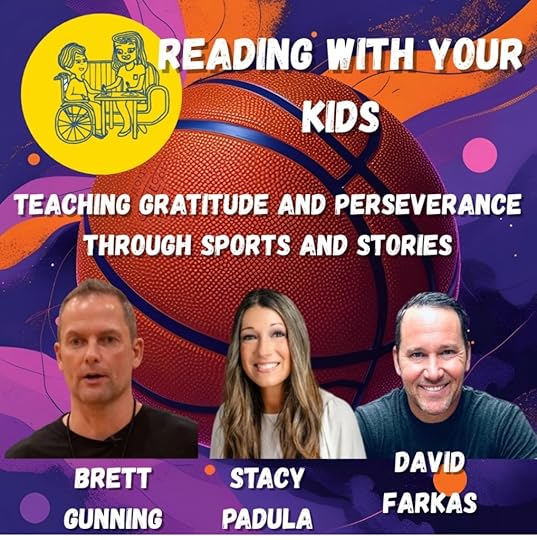
Co-authors Brett Gunning and Stacy Padula were recently interviewed on the Reading With Your Kids Podcast about their multi-award nominated six-book series, On the Right Path.
Learn More About the Series Here

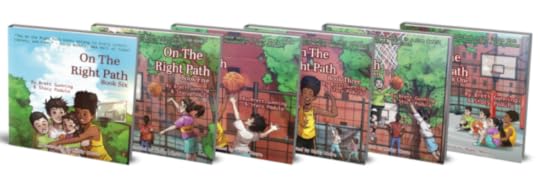
June 5, 2025
Gripped Part 6: The Dunkin Legacy – A Thrilling Tease of the Next Chapter
The Gripped series has captivated readers with its relentless suspense and raw emotional depth, and Gripped Part 6: The Dunkin Legacy is set to raise the bar even higher. Author Stacy A. Padula returns with another pulse-pounding installment, diving deeper into the lives of Taylor Dunkin, Jordan Dunkin, and their father, Jack Dunkin, in the affluent yet perilous town of Montgomery. Here’s a sneak peek into the electrifying continuation of this young adult saga.

In The Dunkin Legacy, the Dunkin family is on the run, hunted by the ruthless enforcers of Paul Bilotti, a dangerous figure with a vendetta against Taylor. The stakes are life-and-death as the brothers and their father navigate a web of deception and danger. Donny Bilotti, a key player in the criminal underworld, has tasked Jimmy with keeping Taylor safe, but trust is a rare commodity, and twists lurk around every corner. As the present-day chase unfolds, the story weaves in gripping flashbacks that peel back the layers of the Dunkin family’s past.
Through vivid glimpses into Taylor, Marc, and Jordan’s childhood, readers will uncover the roots of their fierce loyalty and the scars of their upbringing under Jack’s complex influence. These moments reveal the forces that shaped the brothers into who they are today. Meanwhile, flashbacks to Jordan’s high school years expose the shocking truth behind Michelle Taylor’s fate, a mystery that has haunted the series and now threatens to unravel the Dunkins’ fragile unity.
In the present, the Dunkins’ fight for survival tests their bonds like never before. Taylor’s reckless choices clash with Jack’s desperate need to protect their family, while Jordan and Michelle grapple with the weight of secrets. The Montgomery setting, with its glossy facade hiding a seedy underbelly, amplifies the tension—every safehouse could be a trap, every ally a traitor. Padula’s storytelling shines as she balances heart-stopping action with the emotional turmoil of a family pushed to the brink.
What is the Dunkin legacy, and how far will they go to protect it? Gripped Part 6: The Dunkin Legacy promises a rollercoaster of betrayals, revelations, and impossible choices. Fans of the series will be left reeling as new alliances form, old wounds reopen, and the truth about Michelle Taylor changes everything.
While the release date remains a closely guarded secret, anticipation is building for this explosive chapter. Keep an eye on Stacy A. Padula’s official updates or join the buzz on X to catch the latest fan theories and hints about The Dunkin Legacy. One thing is certain: this is a legacy you won’t escape unscathed.
June 3, 2025
5 Award-Winning Book Series That Address Teen Substance Abuse
Teenage substance abuse is a pressing issue that affects countless young lives, and literature has proven to be a powerful tool for exploring this complex topic. Award-winning book series, in particular, offer gripping narratives that educate, entertain, and inspire readers while shedding light on the realities of addiction. Below are five such series that tackle this issue with depth and authenticity. Each series stands out for its compelling storytelling and its ability to resonate with teens and adults alike, focusing on universal human experiences.
1. Gripped Series by Stacy A. Padula
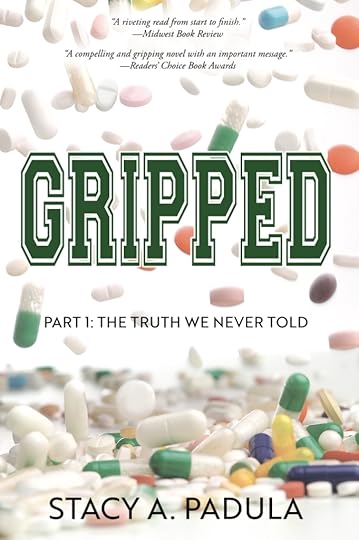
The Gripped series, penned by Stacy A. Padula, has garnered recognition, including the Gold Winner for “Best Teen Book” in the 2022 Readers’ Choice Book Awards. This five-book saga (with a sixth in progress) follows a group of teens in Montgomery, Massachusetts, as they navigate the treacherous waters of opioid addiction, peer pressure, and personal redemption. The series begins with Gripped Part 1: The Truth We Never Told, which introduces Taylor Dunkin, a star athlete whose NFL dreams are derailed by injury and subsequent drug dependency. What makes Gripped so compelling is its raw, realistic portrayal of how “harmless fun” can spiral into life-threatening addiction. Padula’s dual-timeline narrative weaves past decisions with present consequences, keeping readers hooked while delivering a stark warning about substance abuse’s impact on relationships and aspirations. Its adaptation for TV by Emmy-winning producer Mark Blutman further underscores its cultural relevance.
2. Montgomery Lake High Series by Stacy A. Padula

Also by Stacy A. Padula, the Montgomery Lake High series serves as both a prequel and sequel to Gripped, earning praise for its unflinching look at teenage struggles. Launched with The Right Person in 2010, this five-book series has been lauded for its realistic depiction of high school life, including the pressures of substance abuse and bullying. The narrative follows characters like Jason Davids and Courtney, whose faith and morals are tested by a party-centric culture. The series’ compelling nature lies in its relatable characters and the emotional authenticity of their journeys—particularly Jason’s battle to break free from a destructive lifestyle after a friend’s accident. Padula’s experience as a teen counselor shines through, offering readers a nuanced exploration of how addiction takes root, without veering into political territory.
3. The Sixteenth Summer Series by Michelle Dalton

Michelle Dalton’s The Sixteenth Summer series, while not as overtly focused on addiction as others, subtly addresses substance abuse within the context of coming-of-age tales. Recognized for its heartfelt storytelling, the series earned accolades like the Romantic Times Reviewers’ Choice Award. Set in a coastal town, it follows Anna, a teen grappling with family dynamics and peer influences, including friends who experiment with alcohol and drugs. The series’ strength lies in its quiet intensity—Dalton masterfully captures the internal conflict of a teen resisting temptation amid summer romances and shifting friendships. Its compelling nature stems from its focus on personal growth and resilience, making it a relatable yet understated cautionary tale.
4. The Edge of Over There Series by Shawn Smucker
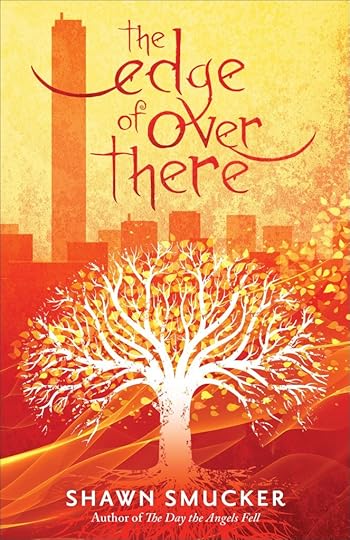
Shawn Smucker’s The Edge of Over There series, which includes The Day the Angels Fell, blends speculative fiction with real-world issues like substance abuse, earning accolades such as the Christy Award for visionary storytelling. While not exclusively about addiction, the series features characters like Abra, whose family history is marred by alcoholism, influencing her choices in a fantastical narrative involving life, death, and redemption. What makes this series compelling is its unique fusion of gritty realism and otherworldly elements—readers are drawn into a metaphorical battle against inner demons, mirrored by external supernatural conflicts. Smucker’s lyrical prose and emphasis on hope over despair keep it engaging and meaningful.
5. The Last Time We Say Goodbye Series by Cynthia Hand

Replacing The Bitter Ashes, Cynthia Hand’s The Last Time We Say Goodbye series (expanded from its standalone roots into a short series with companion novellas) offers a realistic and heart-wrenching look at teenage substance abuse and its aftermath. Recognized with awards like the ALA Best Fiction for Young Adults nod, it centers on Lex, a high school senior reeling from her brother Tyler’s suicide, which was tied to his struggles with alcohol and prescription drugs. The series delves into Lex’s grief and her piecing together of Tyler’s descent, grounded in raw emotion and everyday settings. Its compelling power lies in Hand’s unflinching honesty—she portrays addiction’s toll on a family with no sugarcoating, drawing readers into Lex’s journey of guilt, healing, and understanding through meticulous character development and relatable dialogue.
Why These Series Matter
These series stand out not only for their awards but for their ability to address teenage substance abuse with sensitivity and realism. They avoid heavy-handed political messaging, instead emphasizing character-driven stories that reflect the challenges teens face—peer pressure, identity, and the search for meaning. Whether through the stark realism of Gripped and Montgomery Lake High, the subtle undertones of The Sixteenth Summer, or the imaginative yet grounded narratives of The Edge of Over There and The Last Time We Say Goodbye, each offers valuable insights into addiction’s ripple effects.
Stand-Alone Books Addressing Teenage Substance Abuse
For readers seeking additional perspectives, here are some stand-alone novels that tackle the issue with depth and avoid politically liberal narratives:
Crank by Ellen Hopkins – A raw, verse-driven story of a teen’s descent into meth addiction, focusing on personal consequences.Go Ask Alice by Anonymous – A diary-style account of a girl’s struggle with drugs, emphasizing emotional turmoil over ideology.The Spectacular Now by Tim Tharp – A poignant look at a teen’s reliance on alcohol to mask pain, centered on self-discovery.That Was Then, This Is Now by S.E. Hinton – A classic exploration of friendship and drug use, grounded in human relationships.Out of Reach by Carrie Arcos – A sibling’s quest to save her brother from addiction, highlighting family bonds.These books, like the series above, provide compelling narratives that educate and inspire without veering into political territory, making them timeless resources for understanding teenage substance abuse.
May 27, 2025
Stacy Padula’s Faith: A Journey of Inspiration and Guidance

Stacy Padula, an accomplished author, mentor, and entrepreneur from Plymouth, Massachusetts, has woven her faith deeply into her life’s work, particularly through her literature and educational pursuits. Her faith is not just a personal belief system but serves as a cornerstone for her storytelling, mentorship, and community engagement.
Faith in Literature
Stacy Padula is best known for her young adult series, including “Gripped” and “Montgomery Lake High,” which tackle complex issues like peer pressure, drug addiction, and the quest for identity. Within these narratives, her faith plays a pivotal role. Her books are described as having a Christian message, focusing on themes of love, forgiveness, and moral principles. In “The Right Person,” the first book of the Montgomery Lake High series, Padula explores the challenges of maintaining one’s faith amidst the pressures of high school life. The protagonist, Courtney, is depicted as a person of strong religious convictions who faces the temptation to compromise her beliefs for social acceptance, highlighting the struggle many young individuals face in preserving their faith in challenging environments.
Padula’s “On the Right Path” series, co-authored with NBA coach Brett Gunning, further emphasizes her commitment to faith. This children’s book series is built around the principles of faith, love, and moral integrity, aiming to guide young readers on a path of righteousness through stories that integrate basketball with life lessons. The series is lauded for its focus on teaching children to be loving, unselfish, and respectful, all underpinned by Christian values.
Influence as a Mentor
Beyond her writing, Padula’s faith influences her role as a mentor and educational consultant. Her work with South Shore College Consulting & Tutoring and her recognition as “Empowered Woman of the Year” in 2020 and “Top Educational Consultant of the Year” in 2019 by the International Association of Top Professionals underscore her dedication to guiding young people. She uses her understanding of faith to help students navigate not only academic but also moral and spiritual challenges, advocating for a life lived with integrity and purpose.
Inspirational Speaking and Public Engagement
Stacy Padula has been a speaker on themes of faith, resilience, and youth empowerment. Her talks often reflect her belief in the power of faith to transform lives. Her website and public engagements highlight her view that faith is an anchor for young people, offering them a sense of direction and peace amidst life’s chaos.
Community and Personal Life
In her community, Padula is known for her charitable work, especially through her publishing company, Briley & Baxter Publications, which donates a portion of its proceeds to animal rescues. This reflects a broader interpretation of faith as service and compassion towards all of creation. Her personal life, too, seems to mirror her public one, where faith is a guiding force in her interactions, decisions, and the way she shapes her family’s values.
Conclusion
Stacy Padula’s faith is not merely a background element but is central to her identity as an author, educator, and community leader. Her works and initiatives are infused with Christian teachings, aiming to inspire, educate, and guide individuals, especially the youth, towards a life of moral clarity and spiritual depth. Through her books, mentorship, and public life, Padula exemplifies how faith can be a dynamic, living part of one’s contribution to society, offering a narrative of hope and transformation.

May 26, 2025
Author Stacy Padula & Producer David Gunning Discuss the Gripped TV Adaptation on Recent Podcast
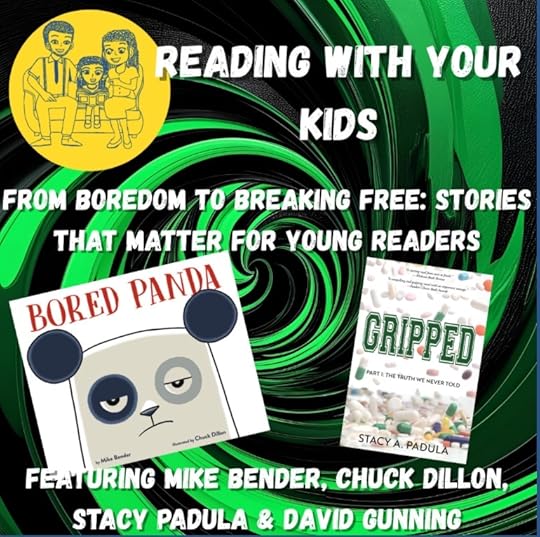
On May 22, 2025, producer David Gunning and author Stacy Padula were guests on Reading with Your Kids, an acclaimed book podcast, to discuss the Gripped series and its adaptation for television currently in the works. Listen below (interview begins at the 30 minute mark):
May 22, 2025
Book Clubs, Dive into “Gripped”: A Series That Provokes, Engages, and Inspires
Attention all book clubs! Are you searching for a series that will ignite passionate discussions, delve into the heart of teenage turmoil, and offer characters so real you’ll feel like they’re part of your club? Look no further than Stacy Padula’s “Gripped” series. Here’s why your book club should make “Gripped” your next group read:

Rich Material for Discussion:
Complex Characters and Relationships: With characters like Jordan, Marc, Cathy, and the intriguing subplot involving Taylor, the Boston Police, FBI, and the Bilotti crime family, “Gripped” offers a cast that invites deep analysis. Explore the dynamics of friendship, love, betrayal, and redemption in a way that feels both personal and provocative.Themes That Resonate: The series tackles substance abuse, peer pressure, personal growth, and the quest for identity, providing endless topics for discussion. Each book is a springboard for conversations about ethics, societal pressures, and the human condition.A Narrative That Hooks:
Engaging Storytelling: The plot is gripping, with twists that keep you guessing and a narrative style that’s both accessible and thought-provoking. From high school drama to the underworld of crime, “Gripped” ensures your book club meetings are anything but dull.Emotional Depth: The emotional journeys of the characters provide a rich vein of material for discussing empathy, mental health, and the resilience of youth. It’s storytelling that connects at a visceral level.Perfect for Group Dynamics:
Varied Perspectives: With characters from different backgrounds and facing various challenges, “Gripped” encourages members to share their own experiences, fostering a diverse range of viewpoints in your discussions.Interactive Reading: The series’ structure allows for both individual and collective reading experiences. Clubs can read at their own pace but come together for discussions that naturally flow from the narrative’s compelling arcs.Educational and Insightful:
Real-World Application: Discussions around “Gripped” can extend beyond the books, touching on educational, social, and personal issues that affect real teens. It’s an opportunity for members to learn from each other’s insights and perhaps even apply the lessons learned to real life.Author Engagement: Stacy Padula’s background in education and counseling adds authenticity to the narratives, making her an ideal guest for book club events, whether in-person or virtual. Her involvement can enrich your understanding of the themes and characters.A Series with a Growing Legacy:
Cultural Impact: With an upcoming TV adaptation, reading “Gripped” now positions your club at the forefront of a potentially significant cultural moment, offering you the chance to be among the first to dissect and discuss the stories before they hit a broader audience.Community Building: By choosing “Gripped,” you’re not just reading; you’re joining a conversation about critical issues, enhancing your book club’s role in community engagement and education.Why “Gripped” is Your Next Read:
To Engage: With narratives that pull at the heartstrings and challenge the mind, “Gripped” will keep your club engaged from start to finish.To Discuss: The depth of the series’ themes ensures there’s always something new to talk about, from character development to moral dilemmas.To Connect: It offers a platform for members to connect over shared or contrasting experiences, building stronger relationships within your club.Don’t miss out on adding “Gripped” to your book club’s reading list. It’s more than just a series; it’s a journey into the complexities of youth, the shadows of society, and the light of human spirit. Available at local bookstores, online, or perhaps even in your school or public library, “Gripped” awaits to be the center of your next unforgettable discussion.
May 20, 2025
Step into the World of “Gripped”: A Series That Speaks to the Heart of Every Man
Fellas, if you’re looking for a gripping read that goes beyond the typical sports or sci-fi narrative, then “Gripped” by Stacy Padula is the series you need to dive into. Here’s why every man should check out this compelling Young Adult series:

Real Characters, Real Challenges:
Brothers in Struggle: “Gripped” introduces you to characters like Jordan, Marc, and Taylor, who navigate the complexities of friendship, peer pressure, and the haunting shadow of substance abuse. Their stories are about overcoming, evolving, and the brotherhood found in shared struggles.Authentic Male Journey: The narrative doesn’t sugarcoat the trials of growing up; it’s a raw, honest look at what it means to be a young man in today’s world, offering insights into the male experience that are both rare and relatable.Themes That Hit Home:
The Fight for Redemption: Each book in the series is a testament to the quest for second chances, personal growth, and the courage it takes to change. “Gripped” offers a powerful narrative of redemption that’s both inspiring and instructive.Exploring Masculinity: The series delves into different facets of masculinity, from vulnerability to strength, providing a nuanced look at what it means to be a man. It’s an exploration of identity that can resonate with anyone reflecting on their own journey.A Storytelling Adventure:
Compelling Plots: Beyond the personal dramas, “Gripped” weaves an intricate plot involving Taylor, a key character whose life intersects with the Boston Police, the FBI, and the notorious Bilotti crime family. This adds a layer of suspense and intrigue that will keep you turning pages late into the night.Characters You’ll Cheer For: The series is filled with characters who make mistakes but strive to be better, embodying the spirit of perseverance and the quest for integrity that many men can relate to or aspire towards.For Men of All Ages:
A Mirror to Past or Present: Whether you’re revisiting your teenage years or trying to understand what today’s youth are going through, “Gripped” offers a window into the male adolescent experience that’s timeless.A Conversation Starter: If you’re a father, uncle, or mentor, “Gripped” provides a fantastic way to connect with younger men in your life, offering material for discussions about life choices, peer pressure, and the road to manhood.Why “Gripped” Deserves Your Attention:
To Reflect: Gain insights into your own journey or those of the young men around you.To Connect: Bridge generational gaps through shared stories of challenge and triumph.To Be Inspired: Discover narratives of personal growth that can motivate you to tackle your own life’s challenges with renewed vigor.The Series with a Future:
Cultural Impact: With an upcoming TV adaptation in the works by an Emmy-winning producer, being part of the “Gripped” fandom now means you’re ahead of the cultural curve, ready to discuss and compare notes when the series hits the screen.Intrigue and Suspense: The involvement of Taylor with the Boston Police, FBI, and the Bilotti crime family introduces a thrilling subplot that adds depth and excitement, making “Gripped” not just a coming-of-age story but also a suspenseful journey through the darker corners of society.Don’t overlook “Gripped” as just another teen series; it’s a profound look into the heart of what it means to be a man, growing up, falling down, and standing back up, all while navigating the perilous paths of crime and law enforcement. Grab your copy today from your local bookstore, online, or suggest it to your local library. “Gripped” isn’t just about reading; it’s about understanding, connecting, and being part of a story that echoes the complexities of male life.



